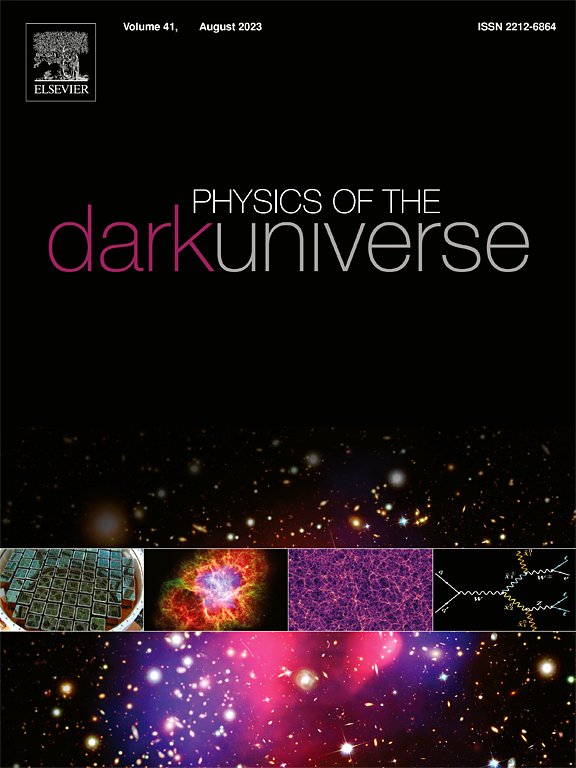Weyl几何引力理论中的时空标量摄动、灰体因子、弱偏转角和黑洞阴影
IF 6.4
2区 物理与天体物理
Q1 ASTRONOMY & ASTROPHYSICS
引用次数: 0
摘要
我们在Weyl几何引力框架内对黑洞进行了全面的理论研究,Weyl几何引力是广义相对论的保形不变扩展,自然地包含了标量场和向量场。由于越来越需要探索爱因斯坦理论之外的引力动力学,特别是在涉及暗能量,暗物质和量子引力的制度中,我们分析了最近提出的Weyl黑洞解决方案,并揭示了与经典预期显著偏离的丰富物理现象。我们的研究涵盖了标量摄动动力学、灰体因素下的霍金辐射、真空和等离子体环境下的引力透镜效应以及落球吸积下的阴影形成。我们发现Weyl耦合参数δ和宇宙曲率项1/l2作为强大的变形参数,显著增强了黑洞的稳定性,影响了霍金辐射,放大和扭曲了阴影图像。利用高斯-邦纳定理和雅可比度量形式,我们推导出新的解析表达式,用于光子和大质量粒子的偏转角,证明了明显的速度依赖性和曲率诱导的引力透镜放大。此外,我们的光学模型显示,Weyl几何效应在观测到的强度和光子环上留下了明显的印记。本文章由计算机程序翻译,如有差异,请以英文原文为准。
Scalar perturbations of spacetime, greybody factors, weak deflection angles and shadows of black holes in Weyl geometric gravity theory
We present a comprehensive theoretical investigation of black holes within the framework of Weyl geometric gravity which is a conformally invariant extension of General Relativity that naturally incorporates scalar and vector fields. Motivated by the growing need to explore gravitational dynamics beyond Einsteins theory particularly in regimes involving dark energy, dark matter, and quantum gravity we analyze a recently proposed Weyl black hole solution and uncover rich physical phenomena that depart significantly from classical expectations. Our study spans scalar perturbation dynamics, Hawking radiation via greybody factors, gravitational lensing in both vacuum and plasma environments, and shadow formation under infalling spherical accretion. We find that the Weyl coupling parameter and the cosmological curvature term act as powerful deformation parameters which significantly enhancing the black holes stability, effecting Hawking radiation, and enlarging and distorting shadow images. Using the Gauss–Bonnet theorem and Jacobi metric formalism, we derive novel analytical expressions for the deflection angles of photons and massive particles demonstrating pronounced velocity dependence and curvature-induced amplification of gravitational lensing. Furthermore, our optical modeling reveals that Weyl geometric effects leave distinct imprints on observed intensities and photon rings.
求助全文
通过发布文献求助,成功后即可免费获取论文全文。
去求助
来源期刊

Physics of the Dark Universe
ASTRONOMY & ASTROPHYSICS-
CiteScore
9.60
自引率
7.30%
发文量
118
审稿时长
61 days
期刊介绍:
Physics of the Dark Universe is an innovative online-only journal that offers rapid publication of peer-reviewed, original research articles considered of high scientific impact.
The journal is focused on the understanding of Dark Matter, Dark Energy, Early Universe, gravitational waves and neutrinos, covering all theoretical, experimental and phenomenological aspects.
 求助内容:
求助内容: 应助结果提醒方式:
应助结果提醒方式:


